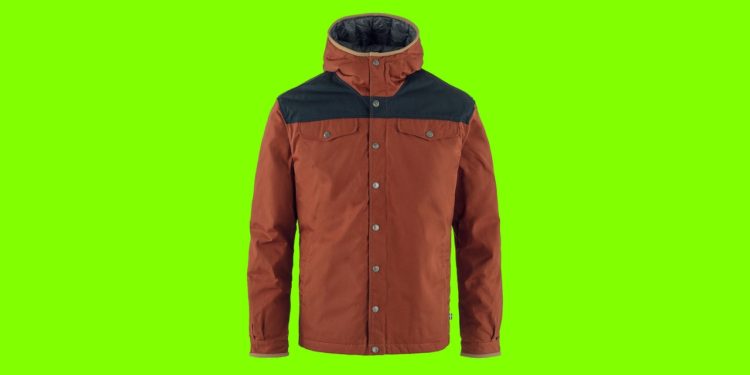By WIRED
The first day of spring is a little more than a month away, which means there’s a lot of cold-weather outdoor gear and clothing on sale right now. You can still get some use out of it! Whether you, like me, have no intention of spending the next couple of chilly weeks squirreled up indoors, or you just like planning ahead for autumn, plenty of our favorite gear is on sale right now.
Special offer for Gear readers: Get WIRED for just $5 ($25 off). This includes unlimited access to WIRED.com, full Gear coverage, and subscriber-only newsletters. Subscriptions help fund the work we do every day.
Outdoor Clothing and Accessories
Patagonia sort of competes against itself with its also-great (but not on sale) Micro Puff hoody, but I’ve used them side by side, and, while they both provide an excellent warmth-per-ounce ratio underneath rain jackets and soft-shell jackets, there are some key differences. The Nano weighs about 2 ounces more (depending on size), thanks to its slightly more robust 20-denier fabric. The Nano is also a trimmer fit, perfect for layering under shell jackets. You’ll have no problem wearing it over a base layer, a casual shirt, or even a thin sweater, but the boxier Micro Puff is better suited for wearing over a thick sweater or fleece.
When I’m not hiking or climbing, I tend toward more robust jackets than the ultralight-yet-fragile down parkas and soft-shell jackets. It’s too easy for a dog to jump up and cut them with their claws or to snag them on the edge of a doorway. Waxed cotton is a favorite of mine for casual wear, and even on camping trips where I can drive in my gear and unload at the campsite. I’ve used a Greenland jacket for five years now, and it’s yet to show any wear. The hood stays put and doesn’t blow off my head too easily, and the jacket has a slightly trim fit that doesn’t inhibit my mobility. Plus, if you live near a Fjällräven store, you can drop your waxed cotton jacket off, and the company will re-wax it for free when it starts to lose its waterproofing.
Blending soft, antimicrobial merino wool with moisture-wicking polyester has been a trend that’s gained significant steam in the past three years. Consider me a fan. At 81 percent merino wool, the Woolies Tech maintains the wool advantage of insulating even when wet. It has a bit more stretch and therefore feels more fitted than a 100-percent merino wool base layer too. Lay-flat seams kept backpack straps from rubbing my shoulders raw during hikes this past winter. Unfortunately, women’s sizes seem to be sold out in both colors, except for extra small.
Anytime I go on a hike or a climb, I wear a Buff to protect my neck from sunburn and, in cold environments, keep my lower face warm. Although I’ve historically brought polyester, even on sub-zero mountain climbing trips, I’m increasingly favoring merino wool. Why? Because it keeps you warm even when your breath moistens the fabric that’s pulled over your mouth and nose. The Buff stayed on my face the best of the bunch without slipping off as I walked and talked, and it’s silky smooth to the touch.
Hestra quality is legendary, and the first thing I noticed when I put these on was that they’re beautifully sewn. They fit true to size, so if you measure your hand according to the sizing chart, you’ll get an accurately measured glove. I take a size 8, and the size 8 Wakayamas fit like, well, you know. The removable wool liner gloves are warm and soft, and there’s surprisingly good dexterity, given that they’re very warm gloves. I can barely button or zip up my jacket without taking off my snow gloves, but the Wakayamas gave me no fuss. Somehow, Huckberry swung a deal to be the exclusive supplier of black-on-black Wakayamas, and that’s the only color available on sale right now. But it’s a killer look.
Hiking and Camping Gear
Photograph: REI
Whenever somebody asks me for a dependable, lightweight, not-too-expensive pack for simple day hikes, I point them to the Flash 22. Compared to the slightly smaller (but still great) Flash 18, the Flash 22 comes with two exterior water bottle pockets and comfier shoulder straps. You’re not going to load up a 14-ounce backpack with that much weight, but the straps did make a positive difference on my hikes, and I drank more when water was easily accessible. Not that it’s not suitable for tougher hikes either. I used mine in Big Bend National Park’s Mesa de Anguila trail on a bruiser of a hike, and I completely forgot it was on my back. For a lightweight backpack, there’s no higher praise.
In my younger, dumber days, I would’ve considered coffee a backcountry luxury. I was just as much of an addict; I was just in denial. By the time I was doing multinight solo hikes, I’d moved to instant coffee on the trail. But that was just a caffeine delivery system, you know? I like to enjoy my coffee. I bit the bullet last year for an eight-day Alaskan climbing trip and brought this baby. It functions almost as well as the Frieling French press I use at home. Customer reviews complain about the silicone plunger filter, but I experienced no leaking of coffee grounds into my cup of coffee. At a paltry 6.3 ounces, it justified itself when I took that first glorious sip on day two.
Reusable metal bottles are my choice when I’m going to the gym, working in the garage, or taking a casual day hike, but on long backpacking and climbing trips, I take lighter-weight plastic bottles. When I’m mountain climbing, I bring two of these. Lips and fingers freeze to metal, after all. And at a hair over 6 ounces, the Nalgenes are nice and lightweight, while still being able to withstand quite a lot of abuse. I’ve seen folks drop these REI-branded Nalgenes down a few slopes without cracking (one of those folks might’ve been me). I’ve never noticed a funky taste from these BPA-free bottles, either, nor any leakage.
Photograph: Coleman
WIRED senior reviewer Scott Gilbertson named the Coleman Dome the best tent for car camping. It’s not small, and it’s not light, but it is spacious enough for an average-size family and all their stuff. Being a three-season tent, you won’t want to take this out into the snow for winter camping, but it’s perfectly capable in the shoulder seasons of spring and fall. Built-in bug netting keeps the crawlies and the fliers out of your backwoods home, and it also lets you vent the tent at night to keep it from getting too stuffy inside.
This is a sleeper favorite of mine. I have a soft spot for Marmot sleeping bags, holding them in high regard, up there with Rab, Feathered Friends, GooseFeet, and Enlightened Equipment. This may be a sleeping bag better suited for late spring and summer, given that its 55-degree Fahrenheit rating is (like all sleeping bag temperature ratings) optimistic. But as you look ahead to summer, or if you plan to camp in the tropics this spring, the NanoWave is the best-value warm-weather on the market. It weighs a mere 29 ounces and packs down to 2.75 liters, which isn’t much bigger than a pair of water bottles. The zipper and fabric are a lot more robust than the ultralightweight bags I usually use, so don’t feel like you have to baby this bag. I spent five nights camping on volcanic rock with a NanoWave 55, and it still looks new.







Discussion about this post